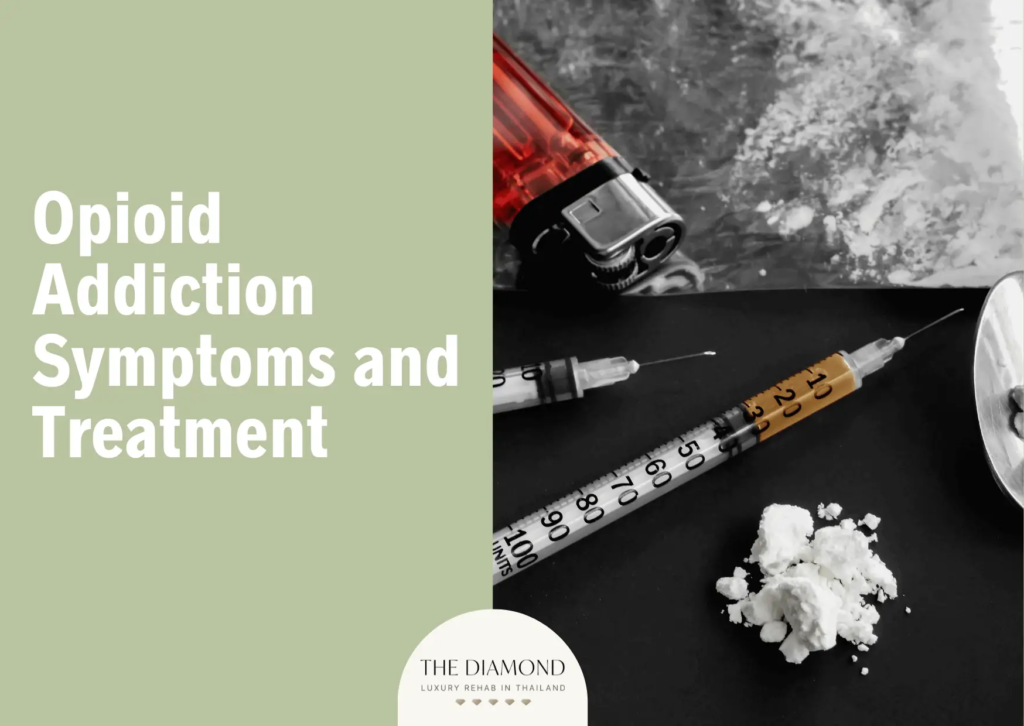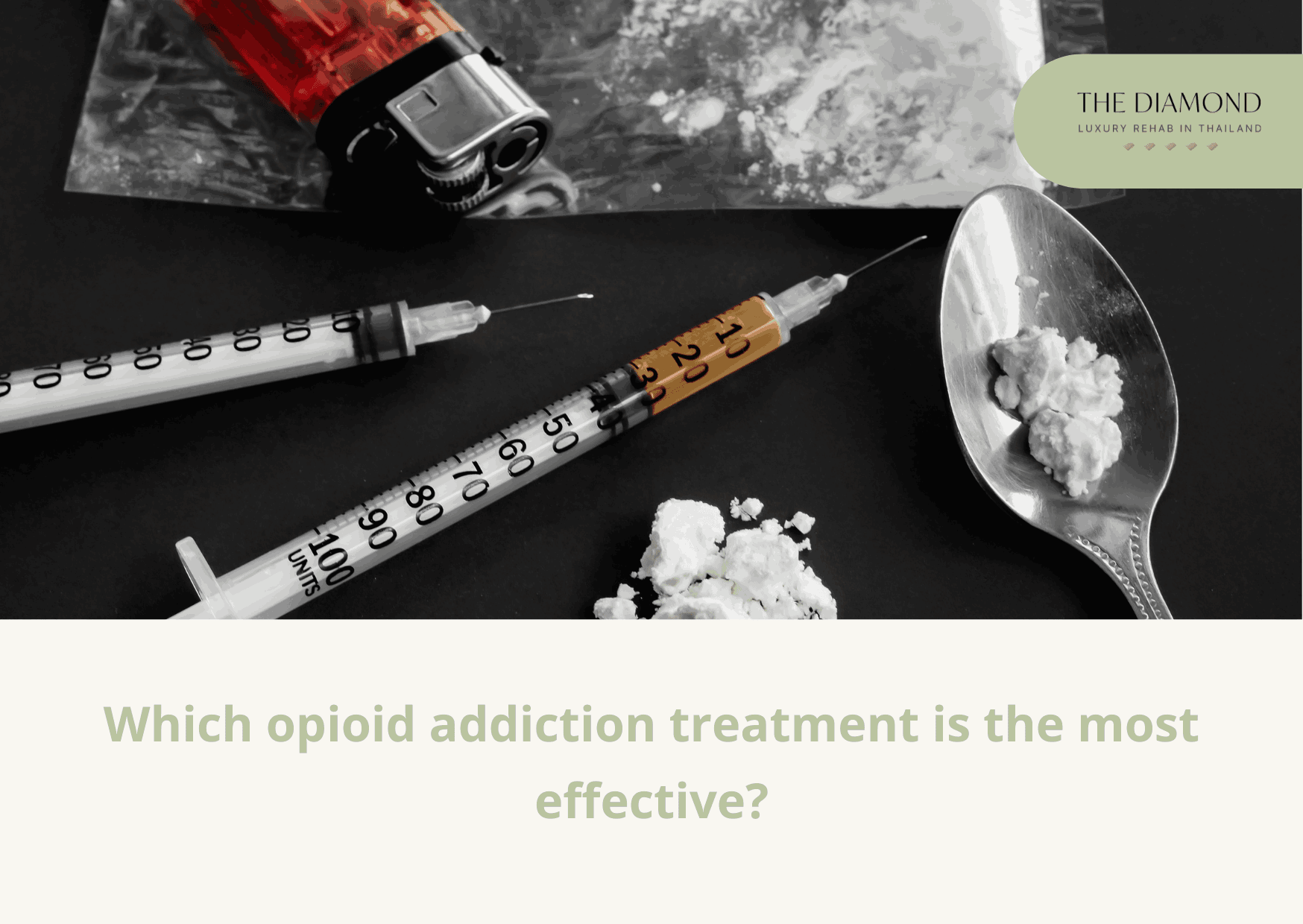Opioid addiction symptoms and treatment
Table of content
- 1. Shallow or slow breathing rate
- 2. Physical agitation
- 3. Poor decision making
- 4. Abandoning responsibilities
- 5. Mood swings
- 6. Irritability
- 7. Depression
- 8. Lowered motivation
- 9. Anxiety attacks
- What are the factors that may increase your chances of developing opioid Addiction?
- What are the common complications and impacts of opioid addiction on your health?
- What are the treatments that your doctor may recommend if you are diagnosed with opioid addiction?
- Which opioid addiction treatment is the most effective?

Opioid addiction is a type of substance use disorder characterized by a compulsive need to keep taking opioids regardless of the harm they cause. Also known as opioid use disorder (OUD), this problem is very common and may lead to overdose and death. The term opioid refers to a class of drugs usually prescribed to treat pain.
The symptoms of opioid addiction include shallow or slow breathing rate, physical agitation, poor decision making, abandoning responsibilities, mood swings, irritability, depression, lack of motivation, and anxiety attacks.
The treatment for OUD usually includes a combination of therapy and medications such as methadone, buprenorphine, and naltrexone.
1. Shallow or slow breathing rate
A shallow or slow breathing rate occurs when a person takes fewer breaths than usual in a given minute. In adults, this is usually fewer than 12 breaths per minute. Opioids can depress breathing. For that reason, people with opioid addiction tend to struggle with shallow or slow breathing. The more drugs a person takes, the slower their breathing rate is.
2. Physical agitation
Physical agitation is the inability to remain calm or stay still. Instead, an agitated person uses movement to release anxiety and tension. Physical agitation is among the most common signs of opioid addiction. In this case, a person keeps fidgeting and moves fast for no purpose or reason. Agitation is also a withdrawal symptom in patients undergoing opioid addiction treatment.
The main reason behind physical agitation in opioid addiction is the intense impact of these drugs on an opiate addict’s behavior and brain.
Someone with opioid addiction may be particularly agitated when they’re unable to use the drug or are struggling to obtain a prescription to get more.
3. Poor decision making
Poor decision-making refers to the inability to connect the problem to the overall strategy in order to make the best possible choice. A poor decision is an act or judgment that is misguided or wrong. People make bad decisions for many reasons, including opioid addiction.
According to a 2019 review on the role of the opioid system in decision making and cognitive control published in Cognitive, Affective & Behavioral Neuroscience, opioids influence decision-making processes and cognitive control through the mechanism of enhancing the perceived value of rewards and diminishing aversive arousal. A 2011 study by Lemenager et al., published in the Journal of Addiction Medicine also states that personality markers and anxiety influence poor decision-making in people with opioid addiction.
Poor decision-making can often lead to mistakes that are difficult or impossible to fix and further aggravate other opioid addiction symptoms.
4. Abandoning responsibilities
Abandoning responsibilities means neglecting tasks, chores, and other responsibilities at home, school, or work. A person fails to meet deadlines or to keep up with all the responsibilities due to a specific reason, in this case, opioid addiction.
Pain medication addiction affects a person’s behavior. They tend to become irresponsible and lose interest in their work or other assignments. With reduced interest, a patient with opioid addiction may sometimes purposely decide to abandon their responsibilities. For others, abandoning responsibilities results from dedicating a lot of time to drug use, planning, and obtaining opioids.
Friends and family members usually notice their loved one is behind with tasks or has problems at work. It’s not uncommon for people with opioid addiction to lose their jobs and fall behind with other responsibilities in life.
5. Mood swings
The term mood swing refers to sudden or intense changes in a person’s mental state. A person can quickly switch from sadness to happiness and frustration. Mood swings are particularly emphasized in people with opioid addiction.
A person suffering from opioid abuse can exhibit rapid and intense mood swings. They may switch from a very positive and highly motivated attitude to depression, frustration, and even hostility.
The more someone uses opioids, the more serious their mood swings are. Withdrawal from opioid addiction may also contribute to mood swings and behavioral problems.
Family and friends usually notice a person quickly changes moods without apparent reason. These moods could depend on the availability of the drug and how it influences a person’s brain.
6. Irritability

Irritability is frustration or anger that often stems from the smallest things. Although almost all people experience irritability at one point or another, in some people, it’s persistent. For instance, for others, irritability may be an indicator of an underlying problem such as opioid addiction.
Compulsive narcotic use can cause personality changes such as irritability. A person with OUD becomes very defensive about drug use. They tend to get easily annoyed when friends or family members express concerns about their behavior.
People with opioid addiction may argue with healthcare providers too. This happens when a doctor refuses to prescribe opioids. Many people use prescriptions too quickly. When healthcare professionals notice unhealthy behavior, they will stop prescribing the drug. This could be a source of frustration and encourage a patient to argue with healthcare practitioners.
Also, a person with OUD can become easily angry at home, for even the smallest things. This behavior is particularly present when they don’t have access to the drug at the moment or are struggling to obtain it.
7. Depression
Depression is a mood disorder indicated by persistent sadness, loss of interest, and other symptoms that affect a person’s daily functioning. A wide range of factors and causes can contribute to depression. Opioid addiction is one of them.
Opioid use and depression tend to go hand in hand. Addiction includes prolonged use of opioids and the use of these drugs in ways that aren’t intended. People with opioid addiction use these drugs a lot longer than they should. A 2020 analysis by Rosoff et al., published in JAMA Psychiatry suggested that extended opioid use (30 days or more) may overload the opioid receptor system and increase treatment-resistant depression risk by 25%.
Although underlying mechanisms through which opioid addiction causes depression require further research, they could involve dysregulation of reward circuitry. This decreases reward pleasure or perception. Physical factors such as endocrine abnormalities are also involved.
8. Lowered motivation
Lowered motivation refers to reduced interest in doing certain things. For some people, lowered motivation manifests itself through canceling social events whereas others just don’t feel like doing anything.
Addiction to opioids can reduce motivation, as well. This happens because addictive drugs can activate specific sets of neuronal circuits i.e. the brain’s reward system. The reward system affects a great deal of motivated behavior, which is why addiction could dampen it. As a result, a person with opioid addiction experiences problems with their motivation.
A 2002 study on altered motivation and learning following opiate withdrawal published in Neuropsychopharmacology shows that withdrawal from opioid addiction could also lead to reduced motivation.
9. Anxiety attacks
Anxiety attacks are episodes of intense fear or panic. Also known as panic attacks, they tend to occur suddenly without a warning. In some cases, anxiety attacks occur due to specific triggers, and opioid addiction is one of them.
Opioid usage may induce anxiety disorders, implying that there is a subset of persons who are predisposed to the development of anxiety disorders in the future, according to a 2012 study by Martins et al., published in Psychological Medicine. At the same time, men and women with anxiety and frequent panic attacks are more susceptible to developing an addiction.
Opioid addiction may cause anxiety attacks because the drugs can affect brain areas that correspond to stress. This leads to higher levels of stress hormones, which facilitate anxiety and panic attacks.
Not only can opioid addiction cause anxiety attacks, but it can also worsen them in people who already have some anxiety disorder and a history of panic attacks.
What are the factors that may increase your chances of developing opioid Addiction?
Risk factors that may increase the chances of developing opioids addiction can be genetic, social, and environmental, according to an article on how opioid addiction occurs from Mayo Clinic. Method and duration of use also play a role in developing opioid use disorder. The most significant risk factors for developing opioid addiction are listed below.
- Crushing pills so they can be snorted or injected
- Prolonged use
- Using extended-release and long-acting formulations
- Personal history of substance abuse
- Family history of substance abuse
- History of mental health disorders including anxiety and depression
- Socializing with high-risk people or spending time in high-risk environments
- Young age
- Unemployment
- Poverty
- Heavy tobacco use
- Thrill-seeking and risk-taking behavior
- Stressful circumstances
- History of drug or alcohol rehabilitation
- History of risky behaviors, criminal activities, DUIs
- Problems with family members, friends, employers
- History of chronic pain, especially severe pain
- History of abuse and neglect in childhood
- Easy access to opioids
What are the common complications and impacts of opioid addiction on your health?
Common complications and impacts of opioids addiction on health are numerous with overdose being the most severe. The health effects of addiction to opioids are listed below.
- Cardiovascular problems: irregular heart rhythm, higher risk of heart attack and stroke, infection in the heart, collapsed veins
- Hypoxia: lack of oxygen to the brain, can lead to brain damage, coma, and death
- Bowel and stomach issues: constipation, vomiting, abdominal pain, heartburn, ulcers, or scar tissue in the intestines
- Sleep-related problems: insomnia, obstructive sleep apnea
- Blood-borne viruses: HIV, hepatitis B and C, and other blood-borne viruses when needles are shared with other persons
- More pain: higher sensitivity to pain
- Organ damage: higher risk of tuberculosis and pneumonia, permanent damage to the lungs, kidneys, and liver
- Nutritional deficiencies: decreased absorption of vitamins and minerals
What are the treatments that your doctor may recommend if you are diagnosed with opioid addiction?
If you are diagnosed with opioids addiction, the doctor may recommend medication-assisted treatment (MAT) and behavioral therapy. The exact treatment approach depends on the severity of addiction, co-occurring mental health problems, and the specific opioid abuse. The main types of opioid addiction treatment are described below:
- Behavioral therapy assists patients in modifying attitudes and behaviors associated with substance abuse, according to a National Institute on Drug Abuse publication titled, “Drugs, Brains, and Behavior: The Science of Addiction”. Additionally, therapy allows patients to develop coping mechanisms and skills to overcome their addiction and prevent relapse. The most common psychotherapies are cognitive-behavioral therapy (CBT), contingency management, and motivational enhancement therapy (MET). In addition to individual counseling sessions, people also have a group and family therapies.
- Medication-assisted treatment: relies on medications to decrease the severity of withdrawal symptoms and cravings in patients with opioid addiction. MAT also helps patients sustain recovery. It’s useful to mention medications are never the sole treatment option but always used in combination with therapy. This kind of treatment relies on methadone, buprenorphine, and naltrexone to help patients overcome opiates addiction symptoms. Healthcare professionals also supervise patients during the process. Below is more information about common medications used in MAT.
1. Methadone
Methadone is a long-acting full opioid agonist, approved by the FDA to treat opioid use disorder. An article about methadone from the Substance Abuse and Mental Health Services Administration (SAMHSA) confirms methadone helps maintain recovery and it works by reducing cravings for opioids as well as withdrawal symptoms.
Patients receive methadone under the supervision of a practitioner in methadone clinics. Methadone is taken daily and available in diskette, powder, and liquid forms. The length of the methadone treatment is a minimum of 12 months, but the duration of the therapy may vary from one patient to another.
While methadone is considered safe and effective, some people may experience side effects. The most common side effects include nausea or vomiting, restlessness, itchy skin, slow breathing, constipation, heavy sweating, and sexual problems.
More serious adverse reactions include lightheadedness and fainting, chest pain, fast heart confusion, and hallucinations.
2. Buprenorphine
Buprenorphine is an opioid partial agonist approved by the FDA for the treatment of opioid addiction. The medication works by producing effects such as euphoria at low doses. Compared to methadone, buprenorphine exhibits weaker effects. Buprenorphine is prescribed to decrease the effects of physical dependence on opioids such as cravings and withdrawal symptoms. Also, it has a lower potential for misuse.
Interestingly, buprenorphine is the first OUD drug that physicians may prescribe and distribute in their offices, according to an article on buprenorphine from SAMHSA. This increases a patient’s access to the treatment. Buprenorphine is particularly useful for persons who don’t have access to methadone clinics or for whom methadone isn’t the right solution.
To begin treatment with buprenorphine, a person needs to be in a state of withdrawal. The length of time for buprenorphine use varies from patient to patient. Some people may need to use it indefinitely.
Side effects associated with buprenorphine include constipation, headache, nausea, dizziness, vomiting, fatigue, drowsiness, sweating, tooth decay, dry mouth, muscle aches, sleep problems, fever, tremors, and palpitations, dilated pupils, and decreased attention.
More serious side effects are unlikely, but they may include respiratory distress, adrenal insufficiency, dependence, withdrawal, and overdose.
3. Naltrexone
Naltrexone is an opioid antagonist approved by FDA to treat opiate abuse as well as alcohol use disorder. It works by binding to opioid receptors to block the euphoric or sedative effects of opioids like morphine, heroin, and others. That way, naltrexone decreases and suppresses cravings and withdrawal symptoms. Since it’s not an opioid, there is no potential for abuse, a naltrexone article published in SAMHSA confirms.
Practitioners licensed to prescribe medications administer naltrexone, which is available as an extended-release intramuscular injectable for patients with opioid addiction.
Common side effects of naltrexone include nausea and vomiting, headache, sleepiness, dizziness, reduced appetite, painful muscles and joints, toothache, and cold-like symptoms.
More serious adverse reactions include severe reactions at the injection site, liver damage or hepatitis, allergic reaction, depression, and pneumonia.
Which opioid addiction treatment is the most effective?
The most effective opioid addiction treatment is psychotherapy, especially cognitive therapy. While MAT is the most well-known approach to the treatment of opioid addiction and methadone shows great success according to a 1998 study on the effective medical treatment of opiate addiction published in JAMA Network, the importance of psychotherapy shouldn’t be underestimated.
After all, medications are never used alone for the treatment of opioid use disorder. They are always administered in combination with therapy. A 2016 study by Moore et al., published in the Journal of Substance Abuse Treatment suggests that cognitive-behavioral therapy can improve treatment outcomes for patients with OUD who are receiving medications. Basically, therapy can make medications more effective.
Thanks to therapy sessions, patients learn to identify negative thoughts and behaviors in order to adopt more positive attitudes and patterns. This way, they’re more equipped to overcome opioid addiction and prevent relapse.

Therapy is about learning to react to negative stimuli in a healthier manner. Patients also learn more about themselves, which supports their recovery process from signs of opioid abuse. In fact, a 2015 randomized trial on the efficacy of CBT on opiate use published in PLOS ONE found that opiate-dependent individuals who receive CBT counseling experience reduced opiate usage, improved occupational performance, and lower levels of stress.
That said, while medications can help with withdrawal and cravings, psychotherapy is vital for every step of the addiction treatment process and beyond.

